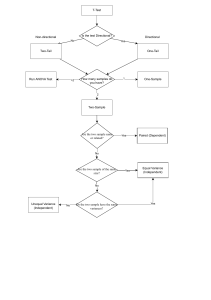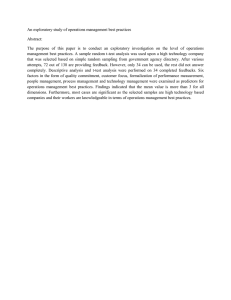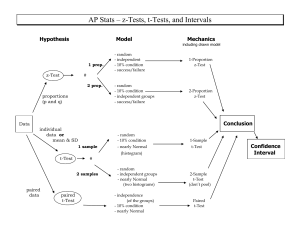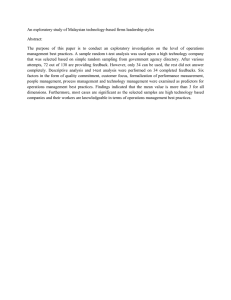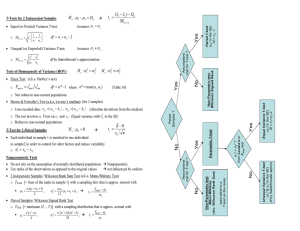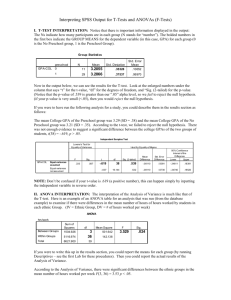Choosing the Appropriate Test
advertisement
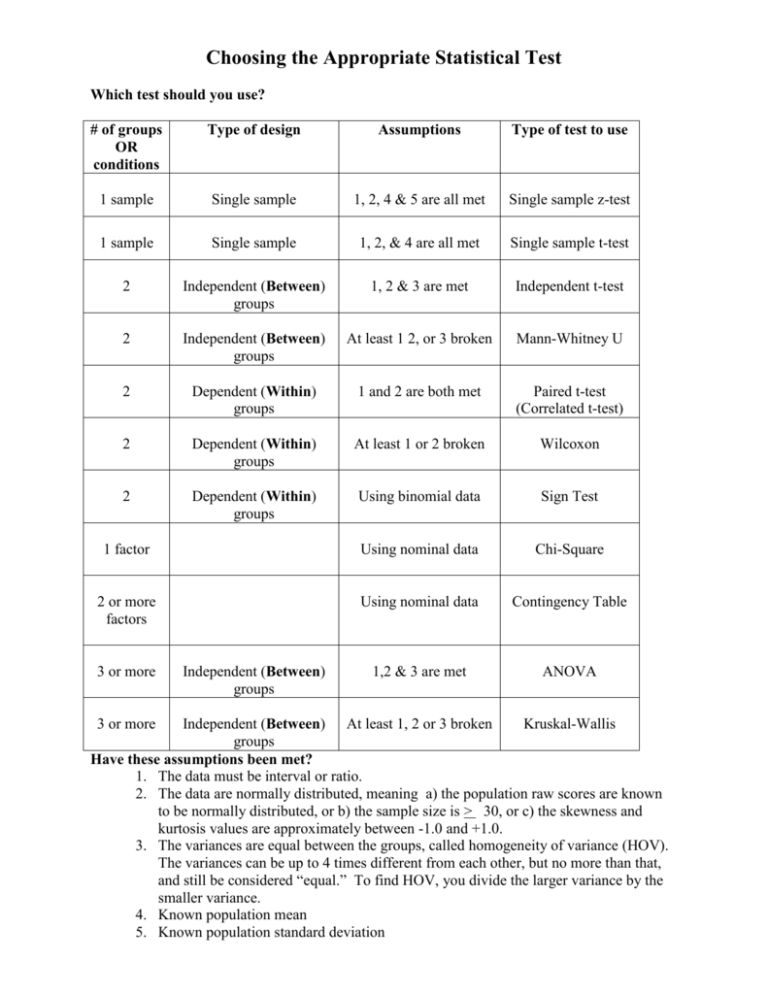
Choosing the Appropriate Statistical Test Which test should you use? # of groups OR conditions Type of design Assumptions Type of test to use 1 sample Single sample 1, 2, 4 & 5 are all met Single sample z-test 1 sample Single sample 1, 2, & 4 are all met Single sample t-test 2 Independent (Between) groups 1, 2 & 3 are met Independent t-test 2 Independent (Between) groups At least 1 2, or 3 broken Mann-Whitney U 2 Dependent (Within) groups 1 and 2 are both met Paired t-test (Correlated t-test) 2 Dependent (Within) groups At least 1 or 2 broken Wilcoxon 2 Dependent (Within) groups Using binomial data Sign Test 1 factor Using nominal data Chi-Square 2 or more factors Using nominal data Contingency Table 1,2 & 3 are met ANOVA 3 or more 3 or more Independent (Between) groups Independent (Between) At least 1, 2 or 3 broken Kruskal-Wallis groups Have these assumptions been met? 1. The data must be interval or ratio. 2. The data are normally distributed, meaning a) the population raw scores are known to be normally distributed, or b) the sample size is > 30, or c) the skewness and kurtosis values are approximately between -1.0 and +1.0. 3. The variances are equal between the groups, called homogeneity of variance (HOV). The variances can be up to 4 times different from each other, but no more than that, and still be considered “equal.” To find HOV, you divide the larger variance by the smaller variance. 4. Known population mean 5. Known population standard deviation
